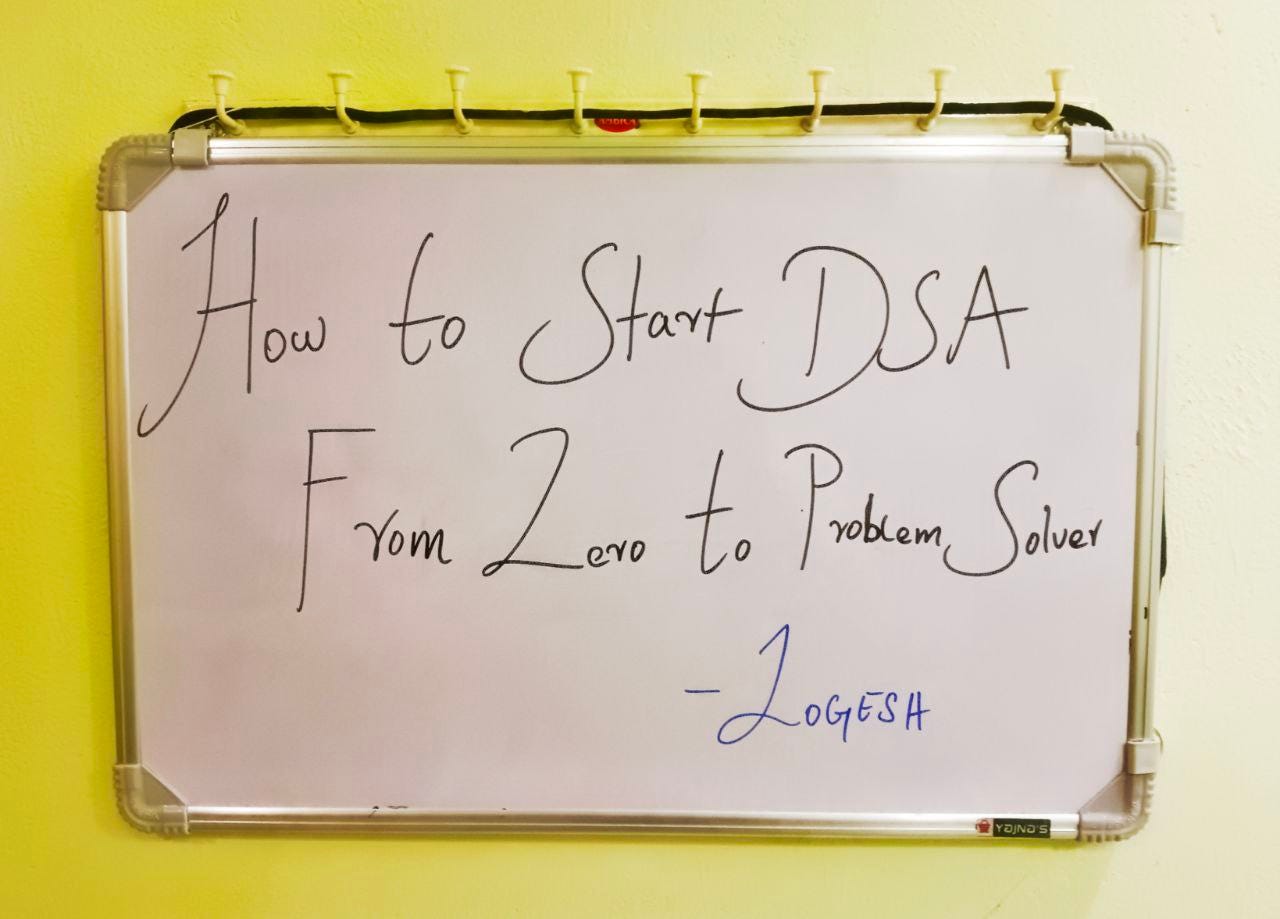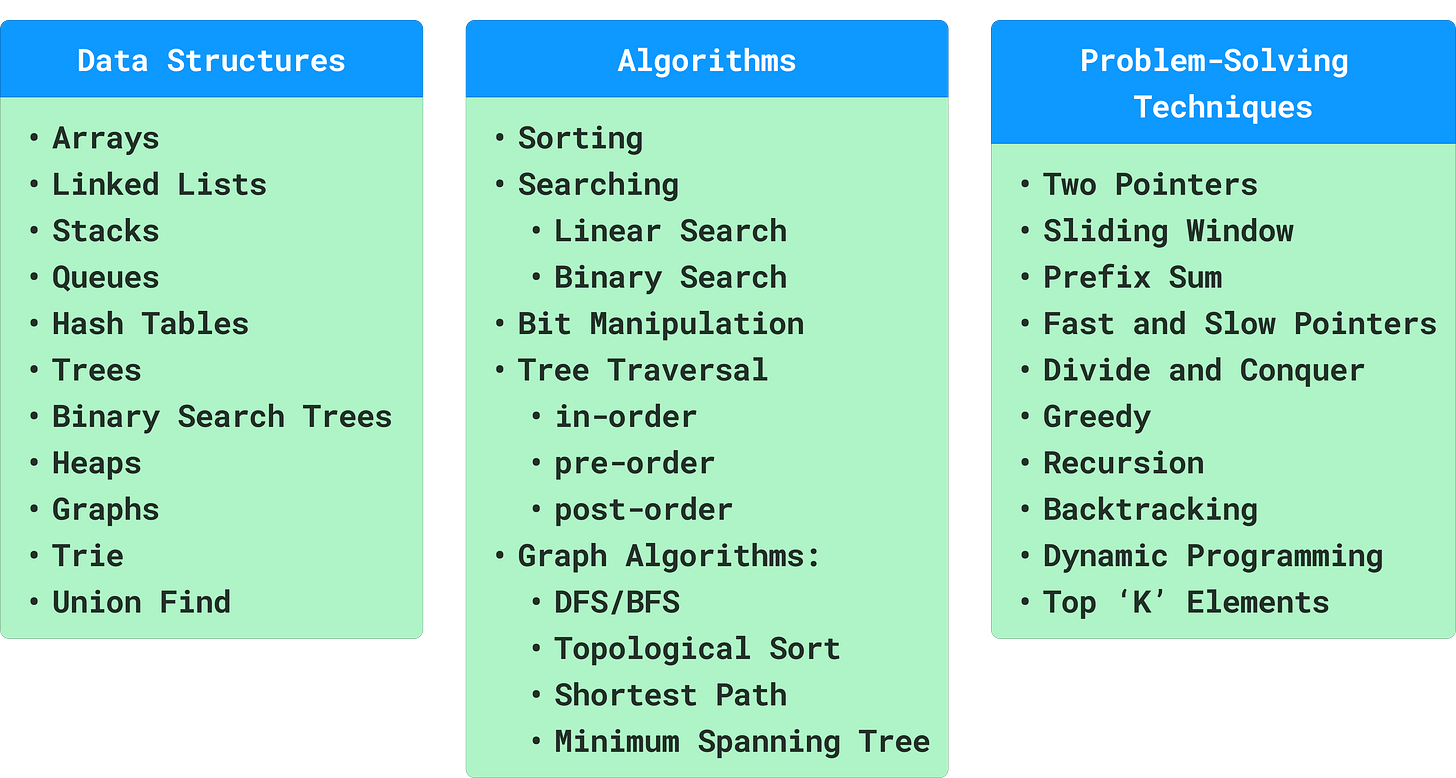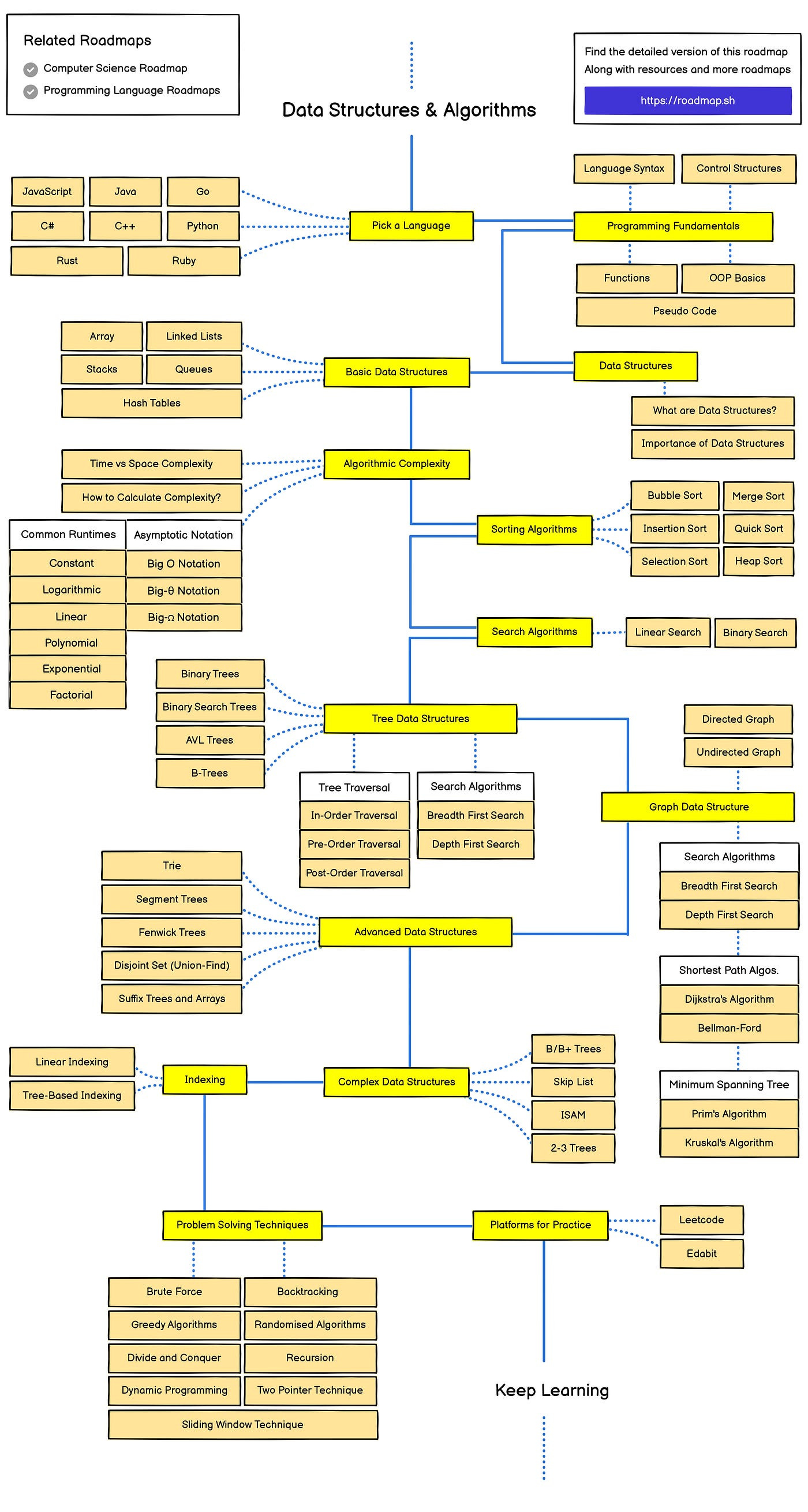Stop Overthinking – Start DSA the Right Way
How to Start DSA the Right Way.
Tired of trying LeetCode?
Stressed every time you see a new problem?
Yeah… that’s normal.
Most beginners jump into DSA like they’re diving into the middle of an ocean with no map, no starting point, just swimming in random directions until they get exhausted.
The truth is, half of the confusion comes from not knowing where to start.
Once you have a clear entry point, DSA becomes a lot less scary and a lot more fun.
In this post, I’ll show you exactly how to find that starting point, build your foundation step-by-step, and stop feeling lost in this “big ocean” of data structures and algorithms.
1. The Essential Topics to Master for Better Problem-Solving
In DSA, there’s a vast range of topics to explore if you want to become a strong problem solver. The problem-solving world is not small, and it’s definitely not limited to a finite set of questions. Every day, new challenges emerge, and companies strive to solve them smarter and more efficiently.
That’s why it’s important to learn key data structures, algorithms, and problem-solving techniques that will equip you to tackle both familiar and brand-new problems with confidence.
Before diving in, it’s important to understand time complexity and space complexity.
These concepts explain how much time and memory your program needs as the input size grows.
The main goal of learning Data Structures and Algorithms (DSA) is to write optimised solutions because while almost anyone can write a working solution, the real question is: Is it efficient enough?
There are advanced topics like Segment Trees and Fenwick Trees, but they’re rarely asked in most coding interviews. While they have their place in competitive programming and specialised problems, you don’t need to dive into them right away.
✅ In the beginning, focus on the most common and high-frequency topics — the ones that form the backbone of problem-solving in interviews and real-world applications.
2. Where Do I Begin?
Jumping into advanced DSA topics without the basics will always feel overwhelming.That’s why it’s important to first know the core fundamentals before moving ahead. Here’s a clear roadmap showing the essential data structures and algorithms to learn in the right order.
You can view full image here → roadmap.sh
The image may be large, but it lays out the right learning path.
Most of the topics listed are arranged in a logical, progressive order and if you follow them step-by-step, you’ll steadily build a strong foundation in DSA and be well on your way to achieving real problem-solving mastery.
3. The Smart Way to Learn Any DSA Concept
i) Practice What You Learn
When you learn a new topic, don’t stop at just understanding it, put it into action.
Aim to solve at least 5 easy, 3 medium, and 1 hard problem related to that topic.
This way, you’ll reinforce your understanding and ensure you don’t forget it the next time you encounter it.
Resources to Practise:
LeetCode
HackerRank
Codeforces
ii) Use Pen and Paper
Only keep the problem in your mind, don’t rush to find the answer.
Start by writing the problem down on paper in your own words, then break it into rules, constraints, and key points.
“writing the problem solves half the problem.”
Once you’ve defined the problem clearly, you can think about possible approaches, test small examples, and refine your solution before you even touch the keyboard.
iii) Learn In-Built Functions in Your Programming Language
Every programming language offers built-in functions and libraries that can simplify your code and make it cleaner.
Knowing these tools saves time, reduces bugs, and keeps your solutions concise and readable.
For example, using it sort() in Python or Collections.sort() in Java can replace many lines of manual sorting logic.
iv) Start with Simple Problems
When learning a new topic, don’t jump straight into complex challenges.
Begin with simple, easy-level problems that focus on the core concept.
This builds confidence, helps you understand the basics thoroughly, and prepares you for tackling medium and hard problems later without feeling stuck or frustrated.
v) Understand and Identify the Pattern — Don’t Just Memorize It
Patterns are powerful in problem-solving, but memorising them without understanding is a trap.
Instead, focus on why a pattern works and how it applies to different problems.
When you truly understand the logic behind a pattern, you’ll be able to adapt it to new scenarios, not just repeat it for problems you’ve already seen.
4. Consistency is Key
Mastering DSA isn’t just about learning new topics , it’s about retaining and reinforcing what you’ve learnt over time.
The best way to do that is through consistent practice. Regularly revisit the concepts and problems you’ve studied, especially the ones you found challenging. Try solving them again without peeking at the solutions, this strengthens your recall and problem-solving confidence.
Create a personal revision list for tricky problems so you can return to them later. Tools like LeetCode lists, browser bookmarks, or Notion pages are great for keeping important resources organised and easily accessible.
Some topics will click quickly, while others might take weeks or months. That’s normal. The key is to show up regularly, even if it’s just a few problems a day. If you get stuck, take a short break, clear your mind, and then try again with fresh focus.
"Small daily improvements over time lead to stunning results." - Robin Sharma
5. Resources
YouTube channels:
To Practice DSA
Roadmap:
Other resources:
Data Structures and Algorithms - Self-Paced (GeeksforGeeks)
Comprehensive course covering basics to advanced concepts, practice problems, and interview prep.
GeeksforGeeks DSA CourseAdvanced Data Structures (MIT OpenCourseWare)
Graduate-level course with deep theoretical concepts, lecture videos, assignments, and projects.
MIT Advanced Data StructuresData Structures and Algorithms Python – The Complete Bootcamp (Udemy)
Beginner-friendly and hands-on course focused on Python implementations and problem-solving.
Udemy DSA Python BootcampAlgorithms Specialization (Stanford University, Coursera)
Covers fundamentals of algorithms and data structures with programming assignments and assessments.
Stanford Algorithms SpecializationData Structures and Algorithms Design - NPTEL (Swayam)
A comprehensive course by IIT professors focusing on algorithm design and data structures in-depth.
NPTEL DSA CourseLearn Data Structures and Algorithms - CodeChef Roadmap
Guided learning path with problems and tutorials on fundamental DSA topics for practice and mastery.
CodeChef DSA Roadmap
I hope you found this newsletter helpful. I’ve decided to share one DSA topic each week, let’s see how this series unfolds. Subscribe to stay tuned for more DSA insights and beyond. Let’s learn and grow together❤️ #WillLearnTogether




